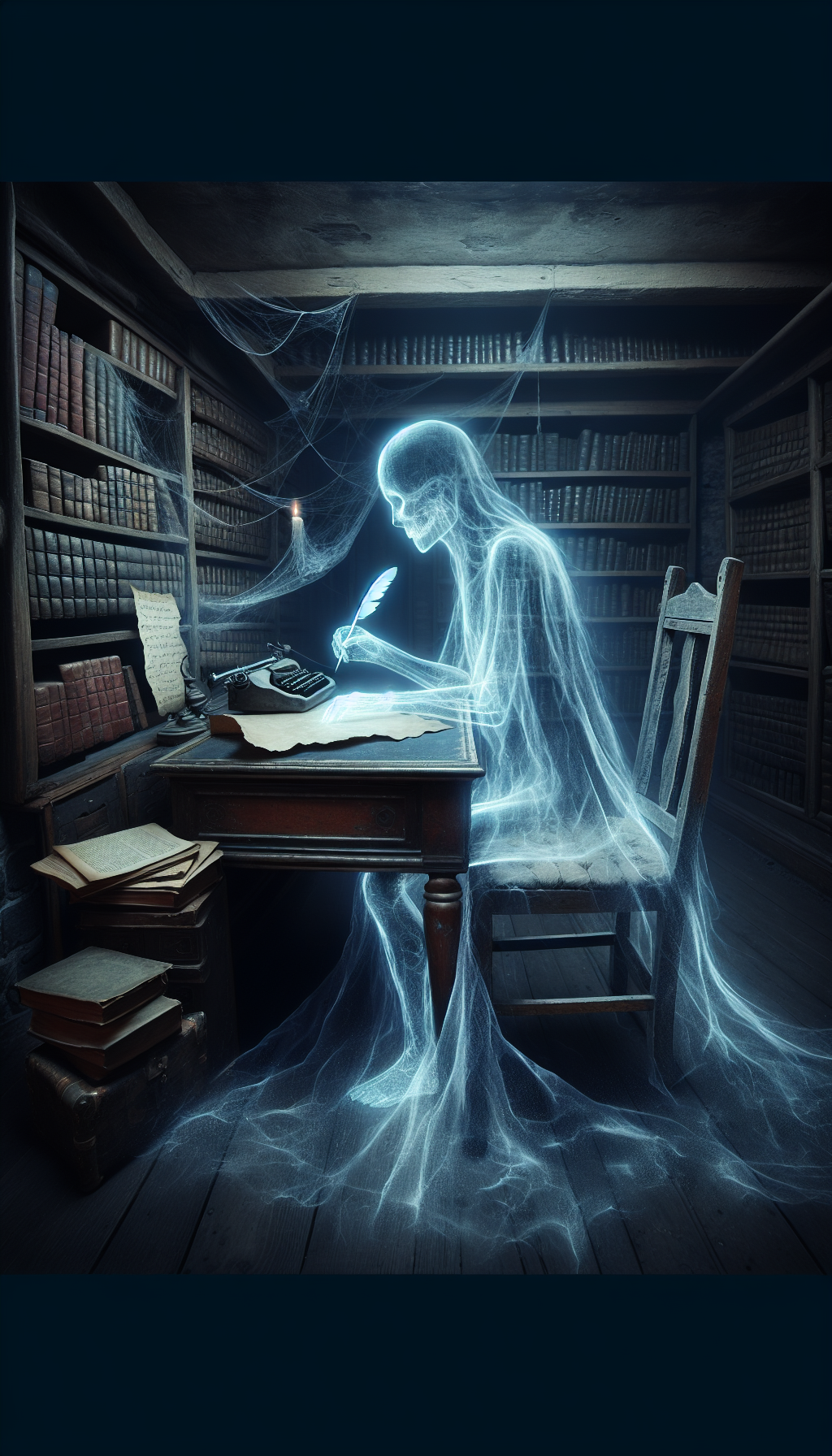How to do Automatic Writing
A Step-by-Step Guide to Unlock Your Psychic Ability
 how to do automatic writing
how to do automatic writingWhen I think of automatic writing, two mediums pop up. One is Chico Xavier, and the other is Yvonne A. Pereira. They were well known for their psychography abilities and numerous written books.
According to Wikipedia, "Automatic writing, also called psychography, is a claimed psychic ability allowing a person to produce written words without consciously writing. Practitioners engage in automatic writing by holding a writing instrument and allowing alleged spirits to manipulate the practitioner's hand."
Wondering how to access profound insights from the depths of your subconscious or spiritual guides? Automatic writing could be your pathway to these revelations. This pragmatic guide offers clear, actionable steps for you to start harnessing this technique, enabling you to write freely without the constraints of your conscious mind, and uncover messages from beyond your ordinary awareness. By tapping into specific brain activity related to creativity and intuition, automatic writing can enhance your awareness and facilitate a deeper connection with your higher self.
Key Takeaways
- Automatic writing is a spiritual practice connecting individuals with their subconscious or higher realms to produce writing without conscious effort, used in spiritualism and psychic activities since the late 19th century.
- Preparing for automatic writing involves creating an undisturbed environment, mentally preparing oneself through relaxation techniques, and choosing appropriate writing tools, which can be traditional or digital, depending on personal preferences.
- Enhancing automatic writing skills requires regular practice, reflecting on sessions, seeking feedback, and utilizing digital tools and online communities to generate ideas and improve the practice while maintaining ethical standards and personal integrity.
 By Tai
By TaiUnderstanding Automatic Writing
Starting with automatic writing introduces you to an illuminating exploration of your subconscious mind. This psychic communication method paves the way for uninhibited thoughts to transfer onto a page, whether with traditional pen and paper or similar technologies such as digital writing tools.
The Basics of Automatic Writing
Born out of French psychological discourse in the late 19th century, automatic writing swiftly gained acceptance within spiritualism and séances. It’s a phenomenon where writing is produced involuntarily, your focus elsewhere, yet the words flow without conscious effort, often facilitated by entering a trance state. Contemporary theories posit that characteristics and motivations often unexpressed in conscious behavior can be unveiled through this trance-like practice.
At the heart of this spiritual practice lies the principle of establishing a connection to your soul and the universe, receiving guidance, and channeling spiritual insight into written form.
Historical Overview
Automatic writing has its roots in diverse religious and spiritual traditions, from Fuji in Chinese folk religion to Enochian magic, where practitioners would relinquish control over their writing hand to allow for the flow of information. In recent times, it became closely linked with spiritualism and the occult, largely due to its adoption by renowned literary figures like W. B. Yeats and Arthur Conan Doyle, who saw it as a means to communicate with higher realms or spirits.
The prevailing 19th-century belief attributed the inspiration for automatic writing to external or supernatural forces, frequently mediated by psychic artists or a person with psychic abilities.
Automatic Writing vs. Traditional Mediumship
While both automatic writing and traditional mediumship are spiritual practices, they are distinct in their methods and purposes. Automatic writing is a psychic ability where individuals generate written content without conscious effort, often to channel the guidance of higher powers.
On the other hand, traditional mediumship involves facilitating communication between spirits and living humans using tools and techniques such as tarot cards and physical mediumship, which may be present during séances or spiritual gatherings.
How to do Automatic Writing
First Session
Setting the stage correctly is fundamental before initiating your first automatic writing session. The preparation process involves creating a conducive environment, mentally preparing yourself, and selecting the right tools for the practice. Taking full, deep breaths can help clear your energy and create a peaceful mental space conducive to receiving guidance from the Higher Self and spiritual support team.
We should be aware and examine the site settings details, using a medium as an example to guide us in this world.
Setting the Scene
Creating the right environment for automatic writing involves several key elements:
- Find a space that is tranquil and disturbance-free.
- A comfortable table or desk equipped with your writing tools
- Suitable lighting to induce a calming effect, facilitating the altered state of consciousness required for successful automatic writing.
The room’s ambiance also plays a significant role in relaxing the mind, enhancing focus, and stimulating creativity, all of which are vital for a productive and effective writing session. Incorporating guided meditations can further help in clearing energy and grounding oneself before starting the spiritual work.
Mental Preparation

In addition to preparing the physical space, mental preparation is also important. Before starting automatic writing, it is important to clear and relax the mind by taking a few deep breaths. Some people find listening to instrumental music or engaging in meditation before the session to be helpful.
Some techniques like the 7-11 breathing method, grounding, and visualizing white light can help boost your creativity and make your writing more inspiring.
Selecting Your Tools
When it comes to tools, you have the option of traditional tools like a pen or pencil and paper, or digital writing tools. The choice often depends on individual comfort and convenience. Personally, I feel that pencil and paper are the best tools for automatic writing, where the Spirit guides your hand.
The Process of Automatic Writing
Once you have prepared yourself mentally and physically, you can start the actual process of automatic writing. This encompasses three main steps: initiating the flow, maintaining the flow during the session, and interpreting the writing afterward.
Let us examine each of these steps in detail.
Initiating the Flow
Before initiating the flow in automatic writing, write down a question you have been searching for an answer to. Call your spirit guide to come and assist you during the process. Concentrate on the question and write down whatever comes to mind. Allow the writing to flow spontaneously for a specific duration. Do not concern yourself with grammar and punctuation. Free the mind of any expectation. Effective prompts are open-ended and guiding, like ‘Spirit Take My Hand’, ‘Thank You for the Guidance’, or sensory prompts like ‘What is your favorite…’. They are designed to facilitate writing flow and encourage communication with higher consciousness.
During the Session
Maintaining the flow during the session is crucial. Let your thoughts pour onto the page, ignoring grammar and punctuation. If you feel stuck or distracted, try listening to instrumental music or meditating during the session.
Your emotional state plays a significant role in the automatic writing process, with a serene and connected state often leading to a smoother flow of information.
Interpreting Your Writing
After the session, it’s time to interpret your writing. Here’s how:
- Read through your work carefully, identifying and marking parts that seem particularly interesting or noteworthy.
- Try to decipher any patterns or symbols that appear.
- Rely on your intuition and inner guidance for personal interpretations.
Enhancing Your Practice Over Time
Like any skill, consistent practice, reflection, and feedback are the keys to mastering automatic writing.
Overcoming challenges and refining your skills will help unlock deeper insights and enhance your connection with your subconscious.
Practice and Reflection
Making automatic writing a regular routine can significantly improve your intuitive and psychic abilities. Here are some steps to follow:
- Reflect on your sessions and identify the skills being utilized.
- Develop self-awareness and personalize your experiences.
- This practice can help you identify patterns and processes that can be honed to improve the quality of the writing.
Feedback
Feedback is a valuable tool for personal growth. If you receive a message meant for someone else, share it with the intended person (if they are open to receiving it). If you are part of a spiritual group or know spiritual-minded individuals, be open to sharing and receiving feedback and suggestions to improve your spiritual writing practice.
Overcoming Challenges
Overcoming challenges in automatic writing, such as distractions, requires patience and perseverance. To overcome writer's block, patience and techniques to induce a state of relaxation can assist in directing the writing process and sustaining concentration.
Tip
In many cases, don't expect the handwriting to be similar to your own. It may be illegible, with words written together without being separated or in a circular manner, etc.
If you need help understanding the message, ask for spiritual guidance. Eventually, the meaning will become apparent to you.
Considerations and Personal Practices
Maintaining high ethical standards and personal integrity is vital as you progress in your automatic writing practice, especially in the context of accessing guidance from your inner self amidst the distractions of daily life. This involves protecting yourself, practicing discernment and verification, and sharing your experiences responsibly.
Privacy and Protection
In automatic writing, always protecting yourself is crucial to prevent unwanted energies from invading your space.
To ensure privacy, employ psychic protection methods such as prayers, establish clear intentions and boundaries, and use grounding and centering techniques.
Discernment and Verification
Discernment and verification play an important role in automatic writing. It’s crucial to establish trust in spiritual connections, such as spirit guides or higher self, and rely on their participation to validate the authenticity and significance of the received information.
Sharing Responsibly
Sharing your automatic writing experiences can offer others insights, inspiration, and a greater self-awareness. However, it’s essential to share responsibly, considering the potential impact on others, respecting the privacy and consent of individuals involved, and ensuring that the sharing is done in a responsible and respectful manner.
Respect those who do not believe.
Summary
Automatic writing is a powerful practice that allows you to tap into your psychic abilities and channel your subconscious thoughts onto paper. Whether you’re just beginning or looking to enhance your skills, this guide provides comprehensive insights into the practice, from understanding its basics to preparing for your first session, interpreting your writings, and integrating technology. Remember, consistent practice, reflection, and feedback are the keys to mastering automatic writing. So, embark on this enlightening journey and unlock deeper insights into your subconscious.
Frequently Asked Questions
How do I start auto-writing?
To start automatic writing, find a quiet, distraction-free place, clear your mind, then place your pen on the paper and let your hand write without overthinking. Avoid looking at your writing until you're finished. This practice allows your subconscious thoughts to flow freely onto the paper.
how to do automatic writing, how to do automatic writing, how to do automatic writing, how to do automatic writing, how to do automatic writing
Chico Xavier
Connecting with Spirits through Psychographic
 by tai
by taiClick below and views more than 600 pieces of spiritual artwork

Spiritual Books
If you enjoy the articles on this website, you will also appreciate the short stories in the books below. Click here and continue the journey.
